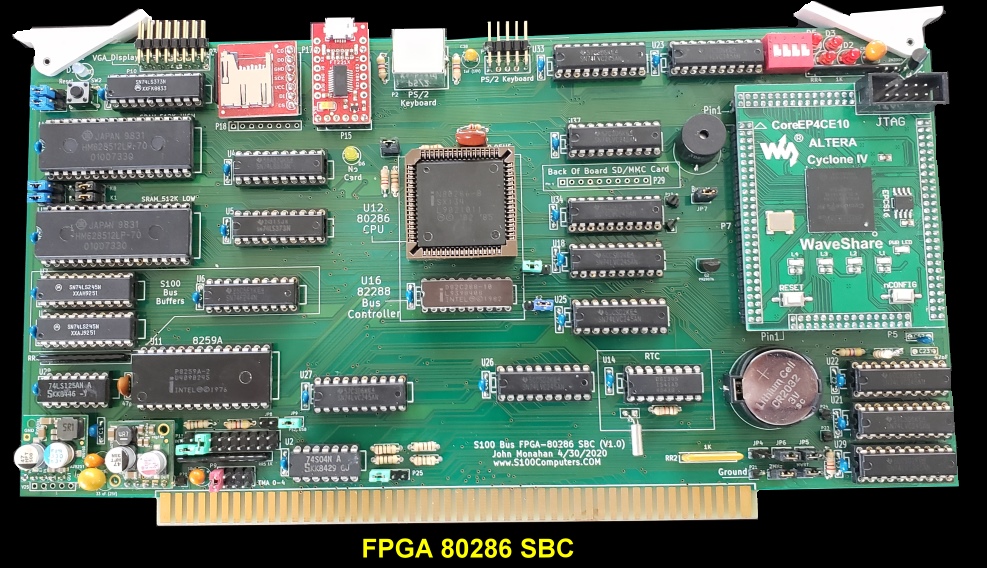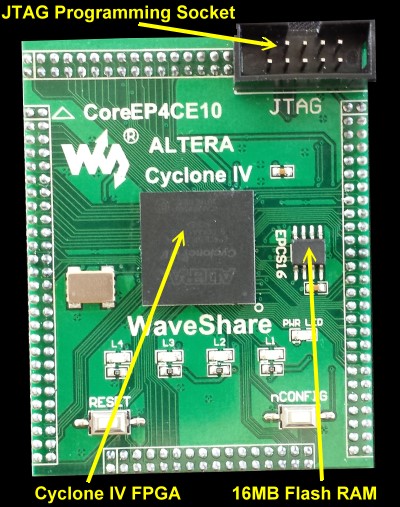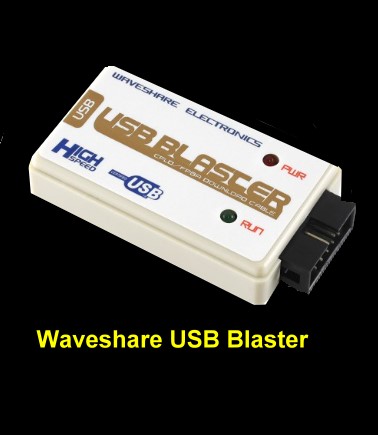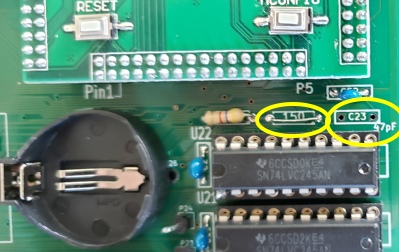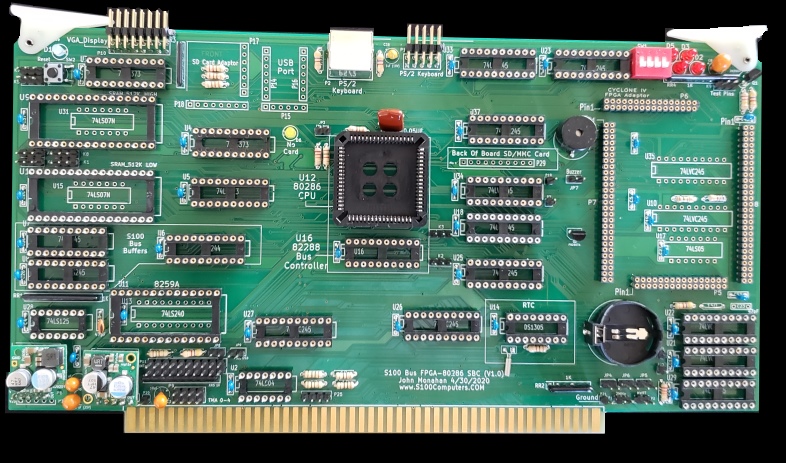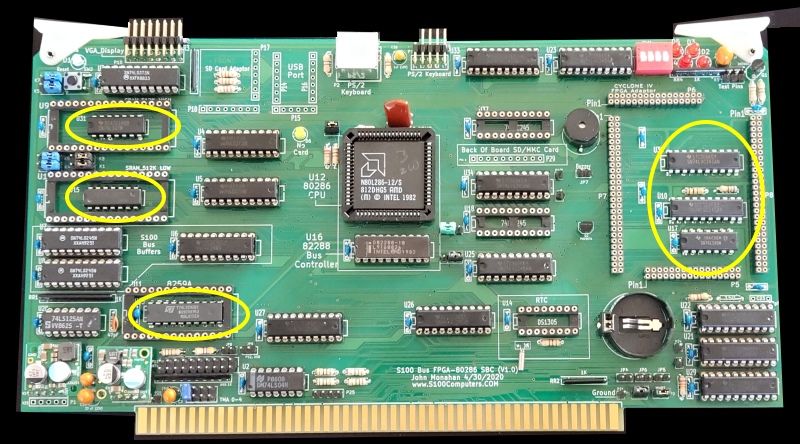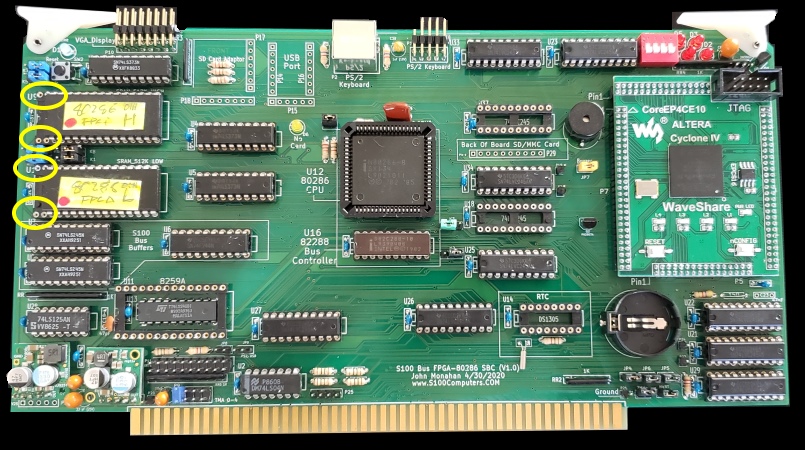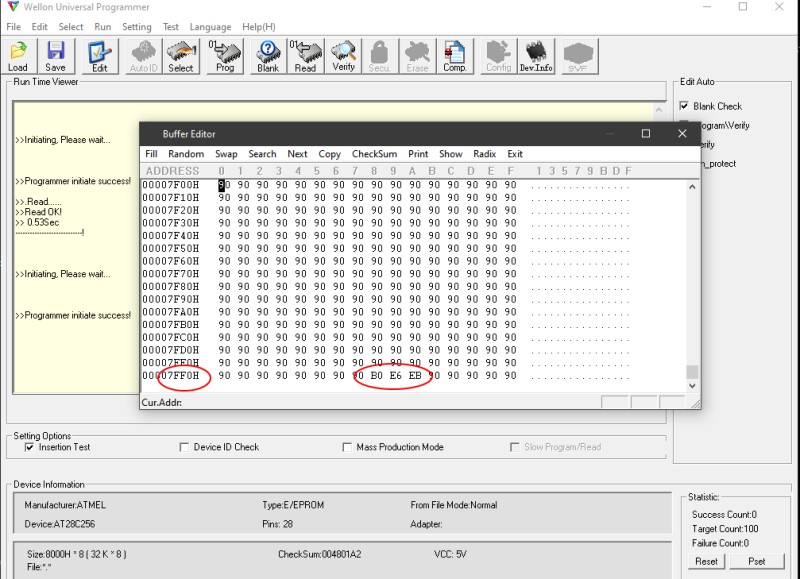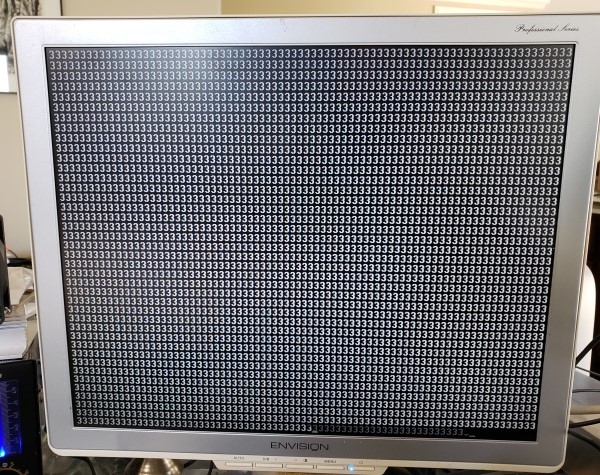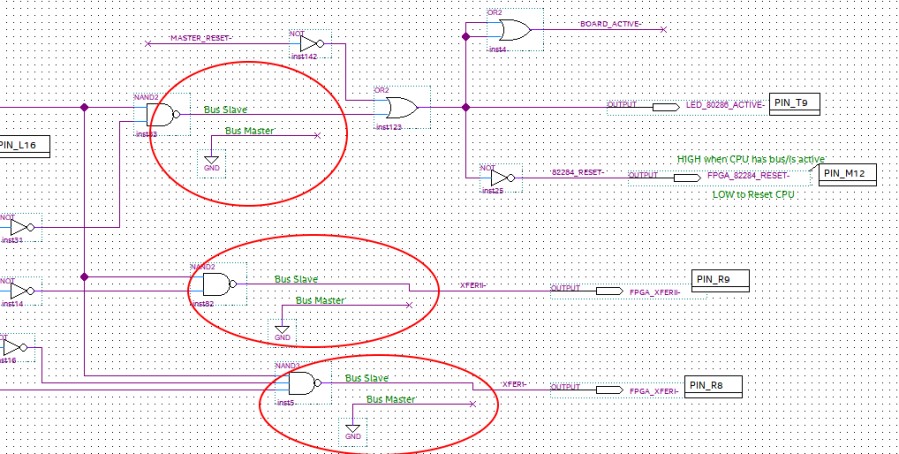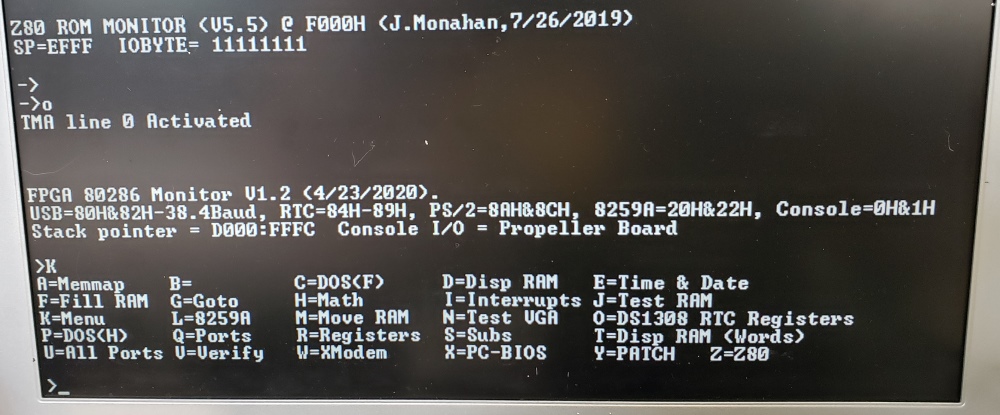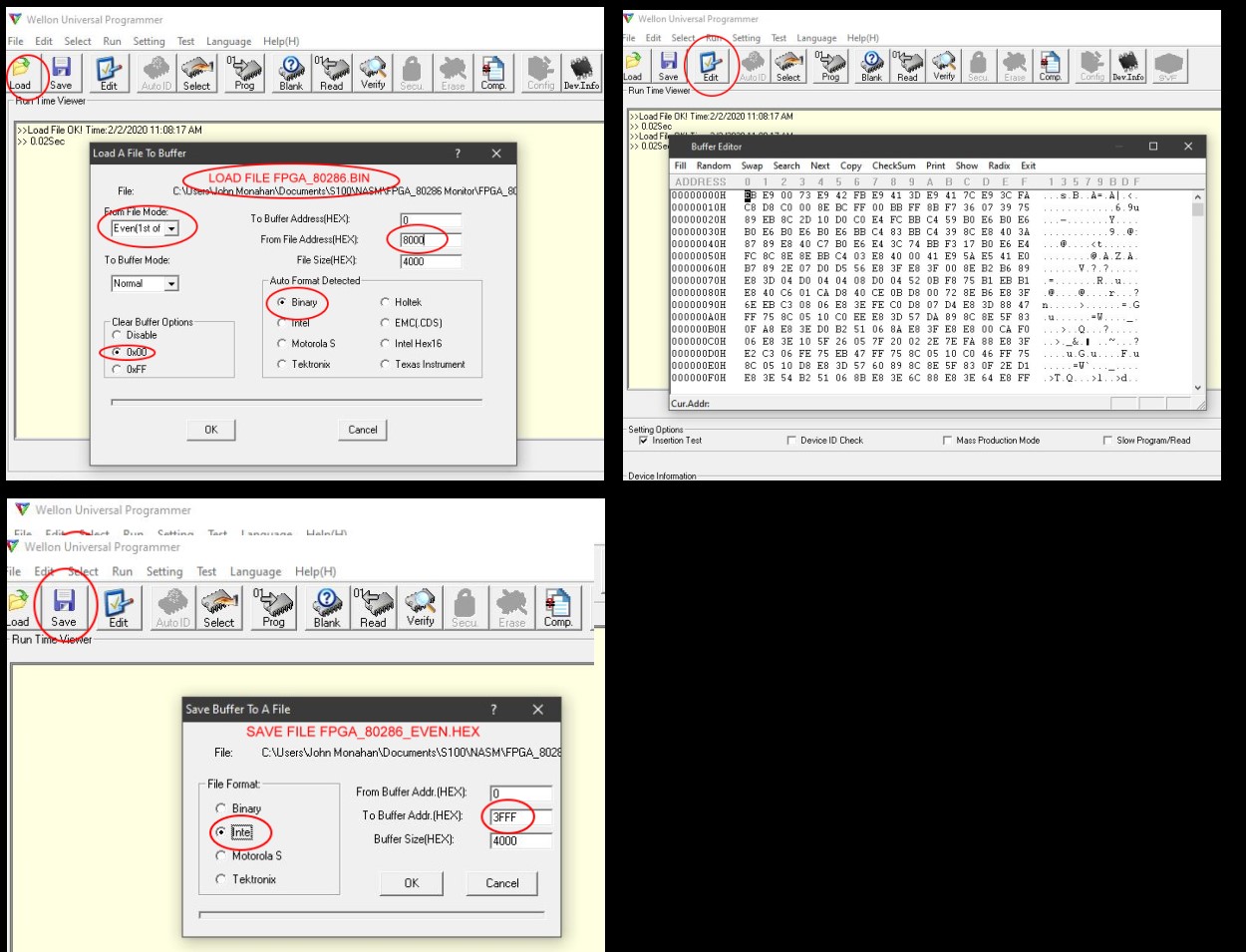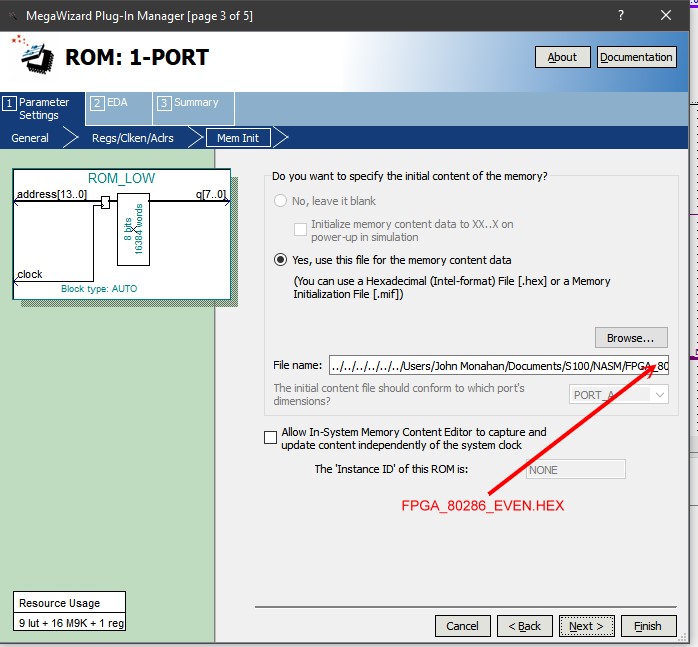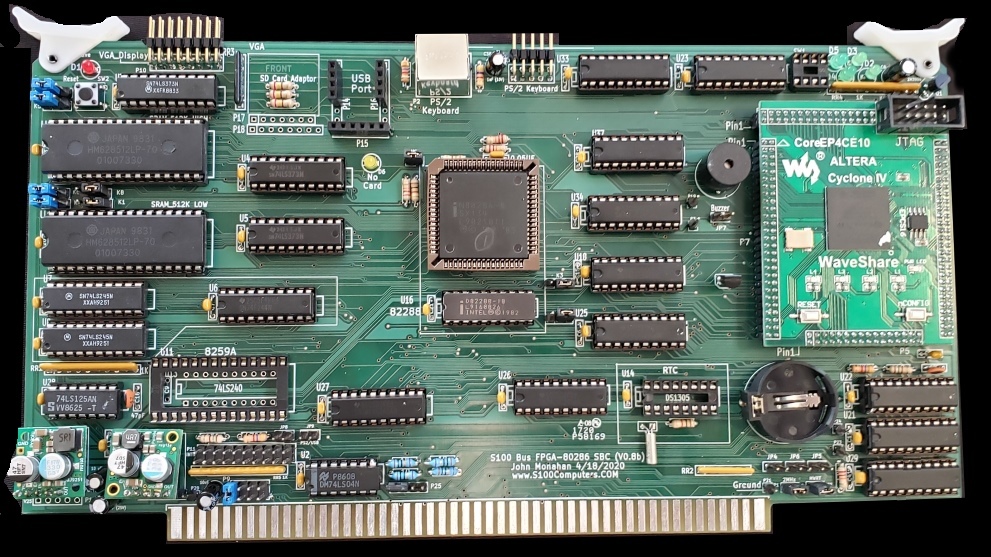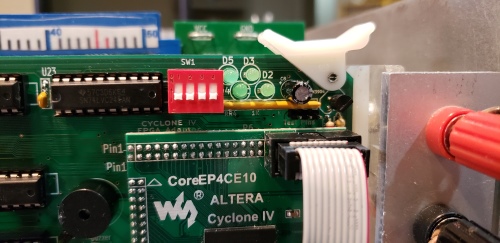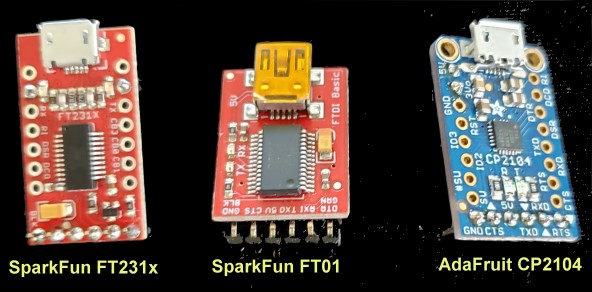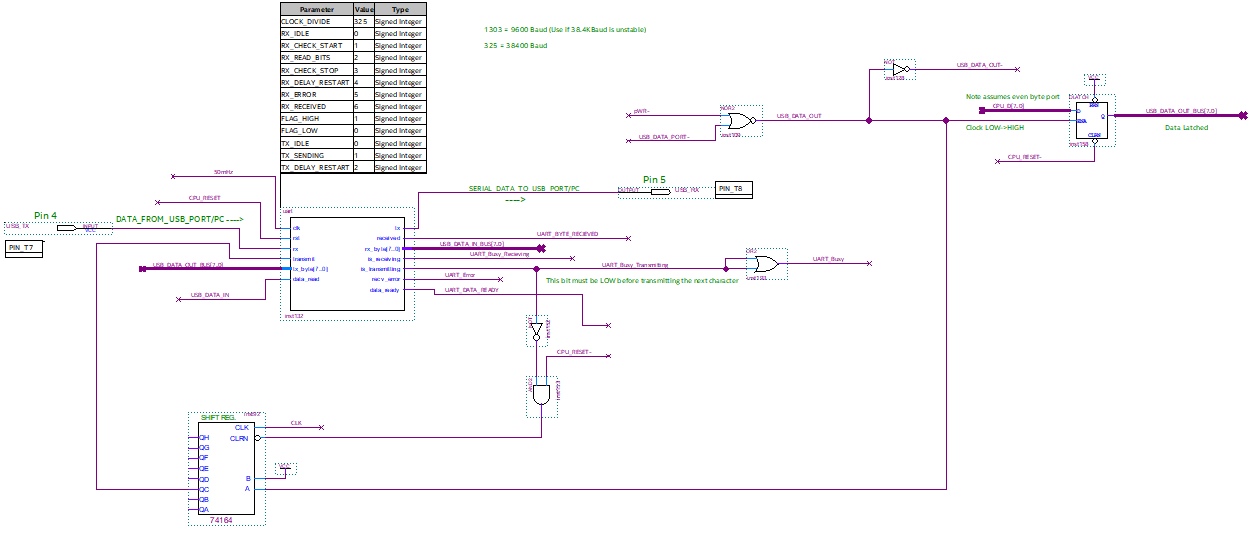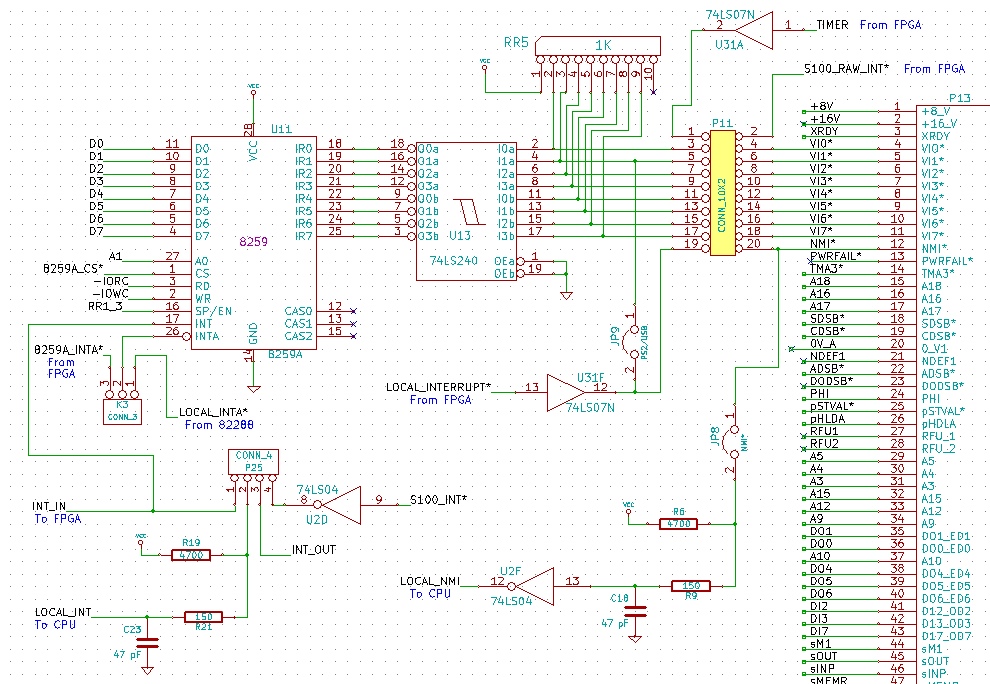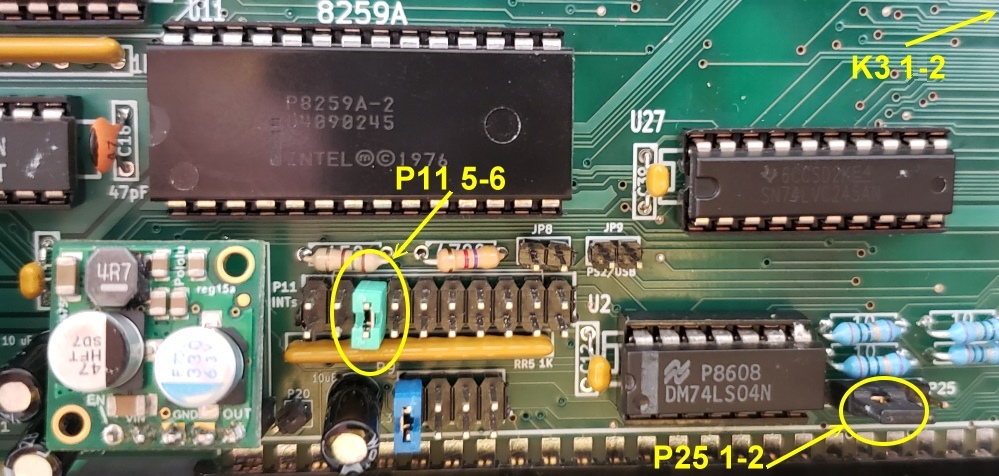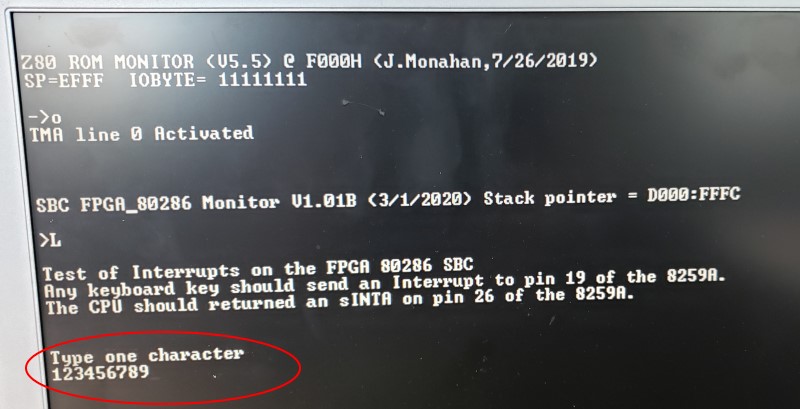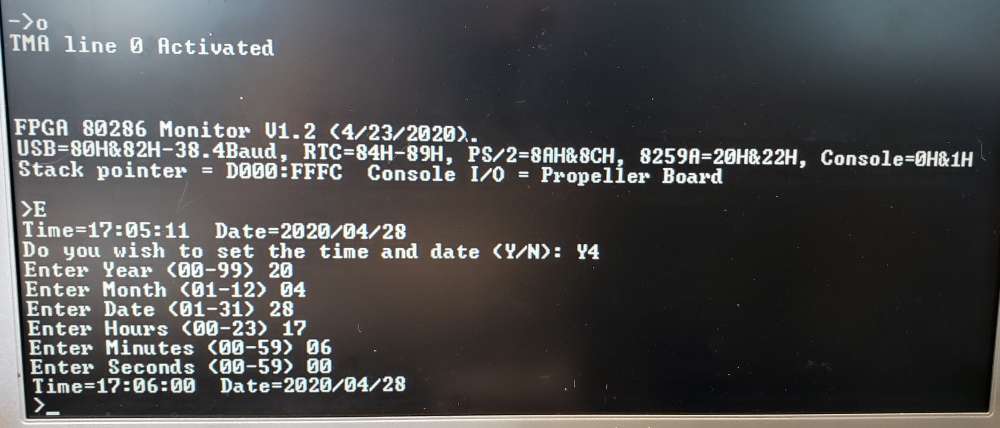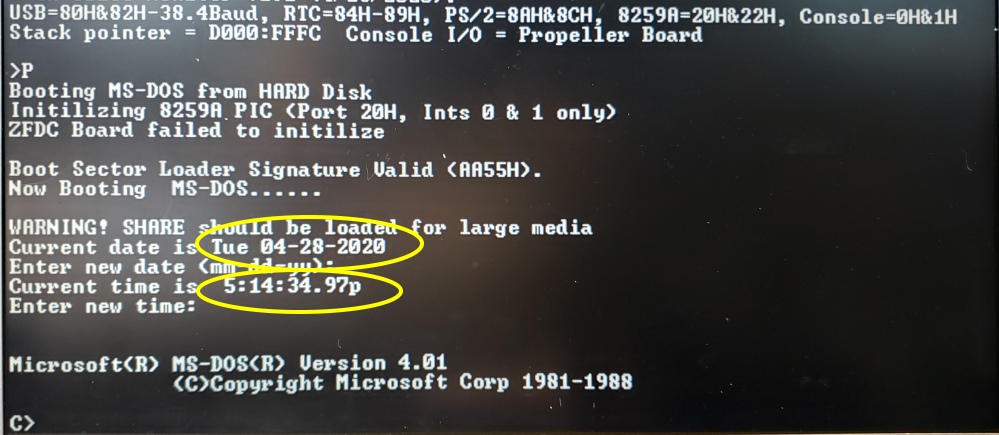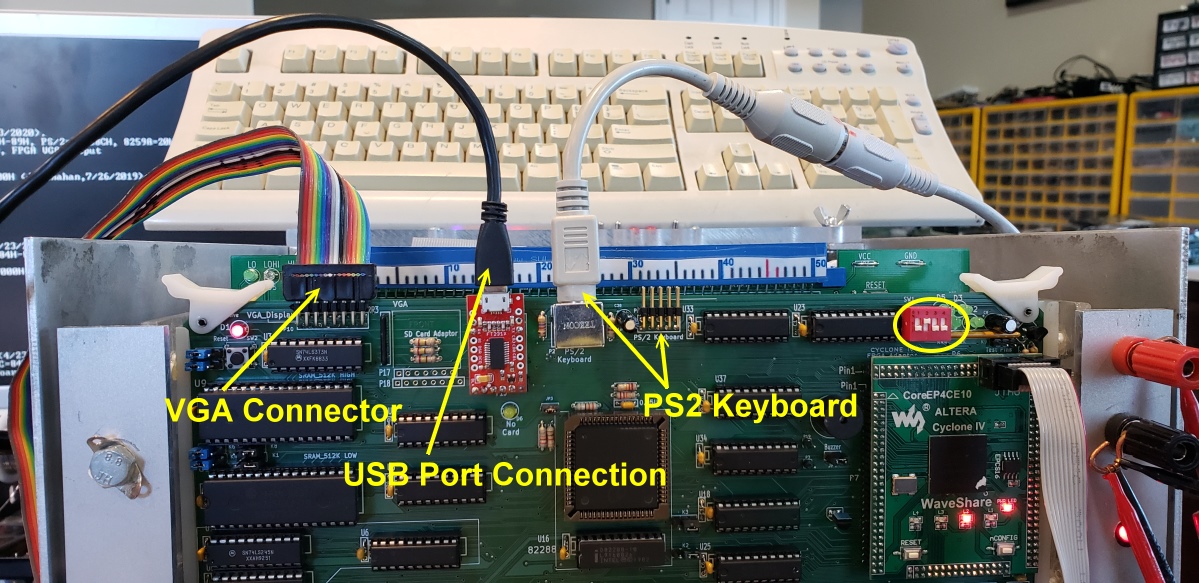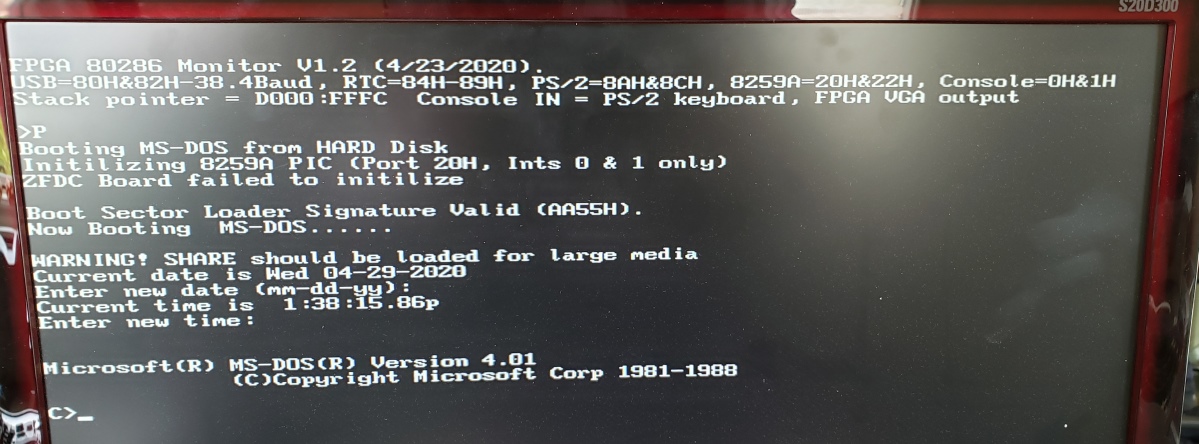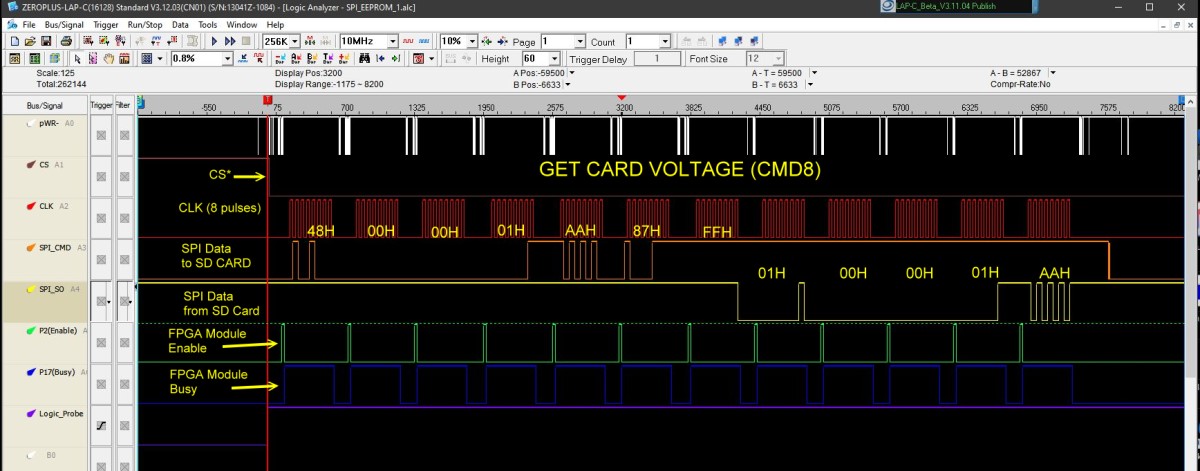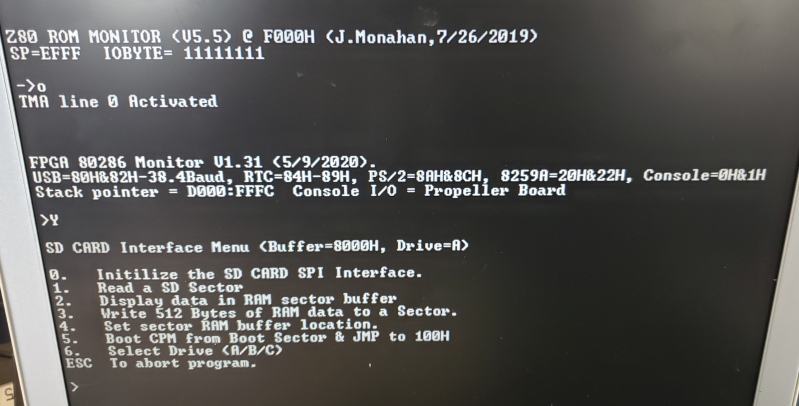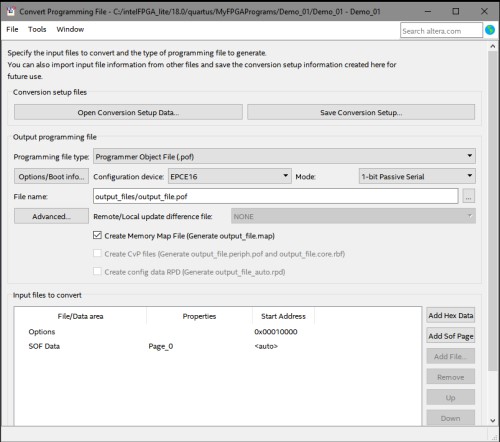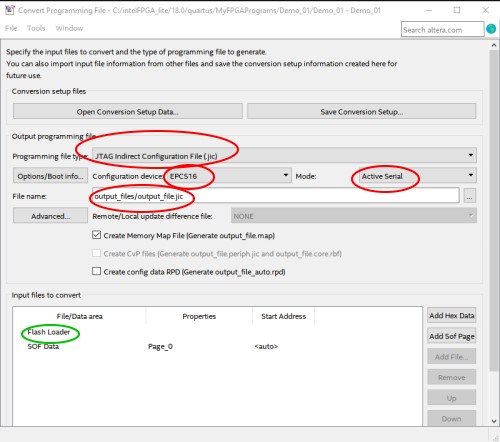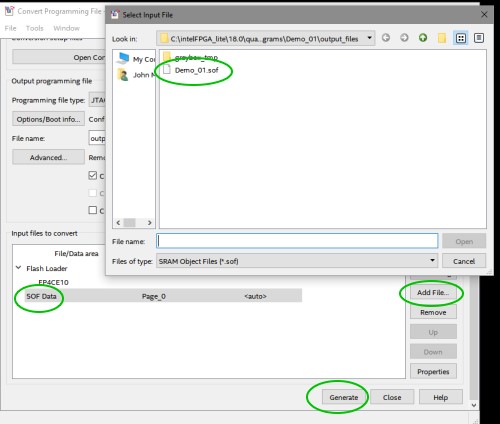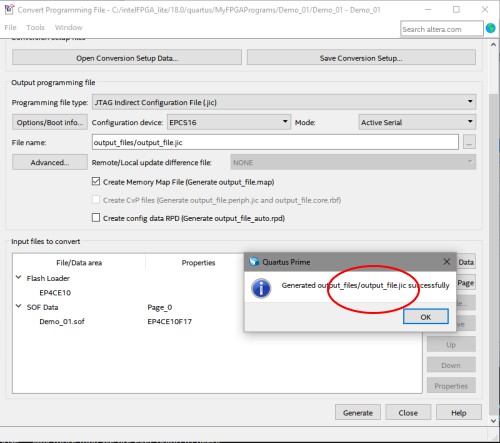Notes
No hardware changes have been noted to date.
The pictures of the board on this page is actully that of the final
prototype board. The actual "production" board has some very minor changes
-- mostly silk screen text changes. However I have added pins (P29) to
attach a SparkFun SD/MMC
card adaptor to the back of the board for an extra SD drive (between U37 and
U34). Note pin 1
is on the RHS on the back of the board.
Over time there may be corrections/additions to the 80286 monitor or FPGA
.bdf files. Alway check below and use the most recent versions.
A Self Contained Board
This Board is a completely self contained S100 Bus Master as defined by the
IEEE-696 Specs. It can therefore be run outside the S100 bus if you
simply provide power to it. There are two pins
P20 for ground and
P21 for 8-10V input to do this. Please use the upmost care in
doing this. Make sure the board is sitting on an insulated background
(glass/wood etc.). Of course you will want to configure
the IOBYTE to the USB port or VGA and PS2
keyboard.

